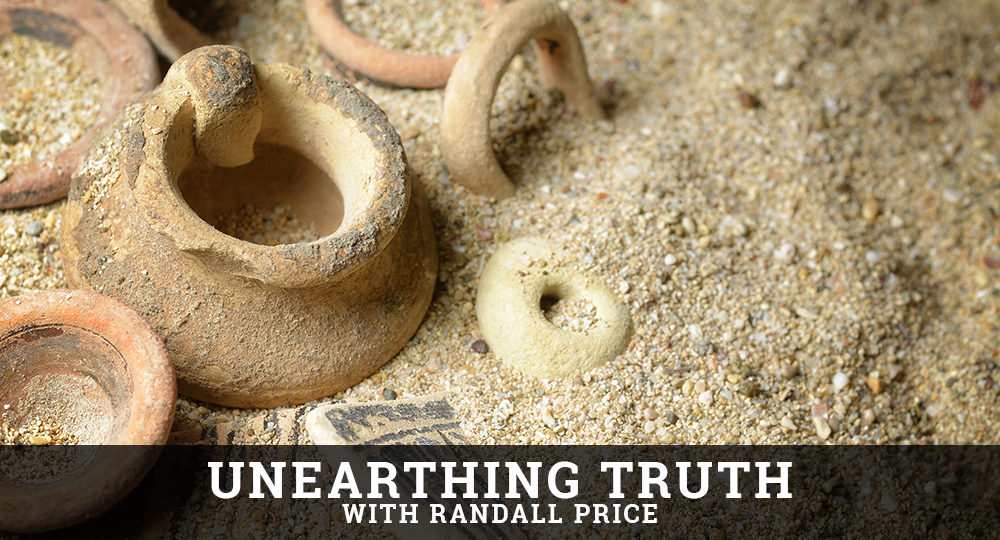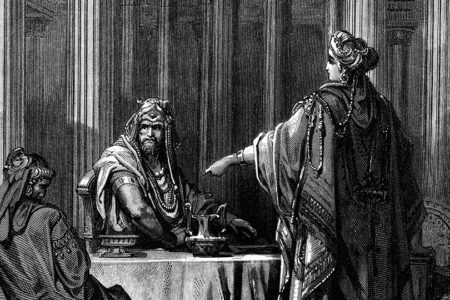Casting Down Serpents
Exodus 7:8–12 records the account of Moses’ and Aaron’s first miracle before Pharaoh: turning Aaron’s staff (a symbol of authority) into a serpent that swallowed those produced by Pharaoh’s magicians. This miracle demonstrated the God of Israel’s superiority over Pharaoh and Egypt.
Archaeological discoveries have provided the cultural background of this strange biblical scene, helping us to understand important points by revealing the meaning of obscure terms and ancient Egyptian practices.
Scripture calls the Egyptian magicians hartummīm, the Hebrew word for the Egyptian title hry-hb (lector priest). This elite group of priests performed rituals that evoked the Egyptian deity Heka, who they believed manipulated reality in this world and the next.1
These priests were not charlatans who, by sleight of hand, revived paralyzed snakes by pinching a nerve behind their heads, as some commentators seeking a natural solution have suggested. Rather, they were occult masters who called on demonic powers to heal, produce rain, and enliven the dead in the afterlife.
The Egyptian Tale of Pharaoh Cheops’ Court (ca. 1600 BC) records some of these priests’ feats, including parting waters, reattaching a severed head, and changing a wax crocodile into a real one and then back to wax again. The ancient Egyptian Book of the Heavenly Cow states, “Moreover, guard against those handlers of heka who know their spells, since the god Heka is in them himself.” Some Egyptian tombs depict priestly processions of Heka carrying a serpent staff in each hand, revealing that rods and serpents were intimately connected in priestly rituals of power.2
These details show that the 10 plagues God brought against Pharaoh and Egypt were directed against specific Egyptian deities and reflect the fact that Moses, the God-inspired author of Exodus, was an insider who had access to the royal court and would have known of these ritual texts and practices. The devouring of the lector priests’ staffs (serpents) symbolized the destruction of their authority and absorption of their power. Since the priests believed they maintained the cosmic order and assisted the sun god on his journey through the underworld, the plagues signaled the Egyptian cosmic order was threatened.
Our English translations say the staffs turned into “snakes” or “serpents.” Ancient pagans often used serpents as motifs in worship, and archaeologists have found models of bronze serpents at ancient Philistine sites (Tel Gezer and Tel Ekron) and Egyptian sites (Timna Valley Temple of Hathor).
In Exodus 4:3, 30, God first demonstrated His power to Moses and later to Israel through Aaron by turning his staff into a snake (Hebrew, nāhāsh). But Exodus chapter 7 uses the Hebrew word tannīn when referring to the snake Aaron’s rod became before Pharaoh. The Old Testament uses the word tannīn a dozen times to signify a terrifying reptile or—depending on the context—a crocodile, sea monster, or dragon. The Septuagint uses the Greek word drakon.3
Some commentators have suggested tannīn refers to a crocodile that supposedly devoured magical spells in the ancient Egyptian religion.4 Others believe the word refers to the Uraeus serpent, a cobra symbol that appeared on Pharaoh’s crown.5 Tannīn could also depict the Egyptian pagan concept of a primordial monster of chaos called Apep. Lector priests ritually cast down wax figurines of Apep to maintain order in the cosmos.
The Hebrew prophets also used tannīn metaphorically to describe the leaders of nations that oppressed Israel, including Pharaoh, whom they considered an embodiment of the forces of chaos (Ezek. 29:3; 32:2).
Whatever creature tannīn refers to, we know it was created by God (Gen. 1:21) and that He alone controls it (Job 7:12). Therefore, the act of Aaron’s staff devouring the lector priests’ staffs showed that the sovereign God of Israel would devour the false gods and priests of Egypt. This sign was fulfilled when the Lord “swallowed” Pharaoh and his army in the Red Sea (Ex. 15:12).
ENDNOTES
-
-
- Geraldine Pinch, Magic in Ancient Egypt (Austin, TX: University of Texas Press, 1995).
- Prof. Scott B. Noegel, “The Egyptian ‘Magicians,’” TheTorah.com, March 30, 2017
<goo.gl/H6vtfN>. - H. Niehr, “tannin,” Theological Dictionary of the Old Testament (Grand Rapids, MI: Eerdmans, 2006), 15:717–20.
- Douglas K. Steward, Exodus (Nashville, TN: Broadman & Holman, 2006), 195. Steward quotes Pnina Galpaz-Feller on this point.
- Eugene Carpenter, Exodus 1—18 in Evangelical Exegetical Commentary (Bellingham, WA: Lexham Press, 2016), 363.
-








